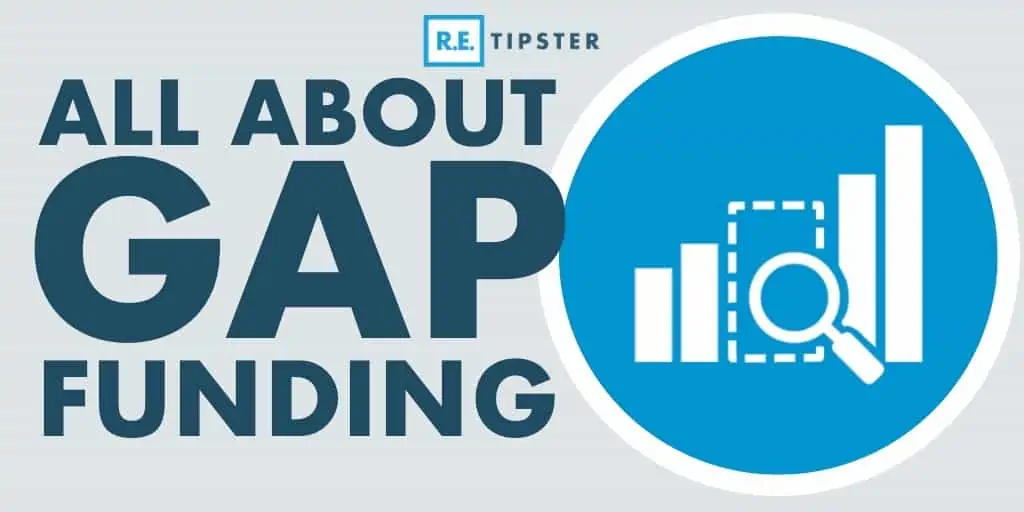
Gap funding for real estate investors closes the “gap” left between what a hard money lender covers and what your investing project costs.
A typical hard money loan only covers 70% to 80% of the purchase price of a property. That leaves you to come up with the other 20% to 30% as a down payment, plus closing costs. And while most hard money lenders do provide 100% of the renovation costs, they require you to put up the money for each phase of repairs first, then they reimburse you in draws.
In other words, you need tens of thousands of your own money to flip a house or do a BRRR deal—unless you borrow from a second source for real estate gap funding.
How to Use Real Estate Gap Funding
Theoretically, you can use gap funding to flip a house with no money down. But its uses go beyond trying to invest with nothing but other people’s money.
Sometimes investors run over budget on the renovations of a flip and need a quick influx of cash. Alternatively, a renovation project may take longer than expected, pinching them on carrying costs and risking foreclosure.
In other cases, investors have most of their money tied up in another rehab, but find an outstanding deal too good to pass up.
Use leverage in real estate carefully. The more leverage you use in a real estate deal, the higher your risk. But sometimes, leverage can help you earn more money by salvaging a deal you’d otherwise miss out on.
Sources of Real Estate Gap Funding
There are many potential sources of gap funding for real estate investors.
While not an exhaustive list, consider these options for real estate gap funding.
Gap Lenders
Some lenders specialize in gap funding for real estate investors. Because they take a second lien position behind the hard money loan, and because they’re lending a high loan-to-value ratio (LTV), they take on enormous risk. This means they charge accordingly, with high-interest rates and fees. Some gap funding lenders also require a percentage of your profits from the deal to make the loan worth their while.
For an example of a gap lender, check out Gap Funding Solutions.
Personal Loans
Alternatively, you can borrow an unsecured personal loan from a bank or other lender.
Some hard money lenders even offer unsecured personal loans (check out New Silver as an example).
Just don’t expect personal loans to be cheap. Without a lien securing them to real property, they come with significant risk for the lender.
Private Notes
Some real estate investors raise money privately from friends, family members, colleagues, and acquaintances.
On the plus side, private money is flexible and the terms are negotiable. But it risks your personal relationships, and it takes time and a proven track record to build the trust needed to borrow money privately from friends and family.
HELOCs
If you have equity in your home or a rental property, you can open a home equity line of credit (HELOC) secured against it.
These credit lines work similarly to credit cards, like a revolving line of credit. You can draw on it as needed and pay back your balance on your own schedule. That means you can use HELOCs as flexible funding sources for down payments, closing costs, and repair costs on your real estate deals.
They tend to come with medium interest rates—higher than mortgages but lower than gap loans or personal loans. But because they attach a lien against your property, you have to go through a title company and a formal settlement, which means thousands of dollars in closing costs.
Business Credit Lines
Not all lines of credit require a lien against your property. You can also open unsecured business credit lines as a real estate investor.
Expect high interest rates but fewer fees since you don’t need to do a title search or traditional closing. You may not get approved for a particularly high credit limit, however, as a businessperson with no inventory or collateral.
Credit Cards
I once bought a property with credit card balances alone. As you can guess, it was a lower-end property.
You’re not limited to personal cards, however. Like with business credit lines, you qualify for business credit cards as a real estate investor. Nor do you need to pay hefty cash advance fees—you can use services like Plastiq to pay for real estate costs with your credit card, paying less than your card’s cash advance fee (and without the cash-out limit).
Check out Fund & Grow as a business credit concierge service that helps you open the maximum allowed credit lines and credit card balances.
Joint Venture Partners
Finally, you can partner with someone else and have them bring cash to the deal.
Perhaps you supply the expertise, or the legwork, or some other crucial piece of the puzzle. They supply the lion’s share of the down payment and closing costs, and you negotiate a profit-sharing agreement.
As the old investment cliche goes, 50% of something is better than 100% of nothing.
Should You Borrow Real Estate Gap Funding?
In a perfect world, you can come up with cash to cover the down payment, closing costs, and first draw of repair costs for each real estate deal.
But real estate investing gets messy sometimes, and you may find yourself in a cash crunch. Know when to double down with creative financing and when to say no to promising deals if they will stretch you too thin.
Have you ever used real estate gap funding? Where did you borrow it from, and how did the deal turn out?












